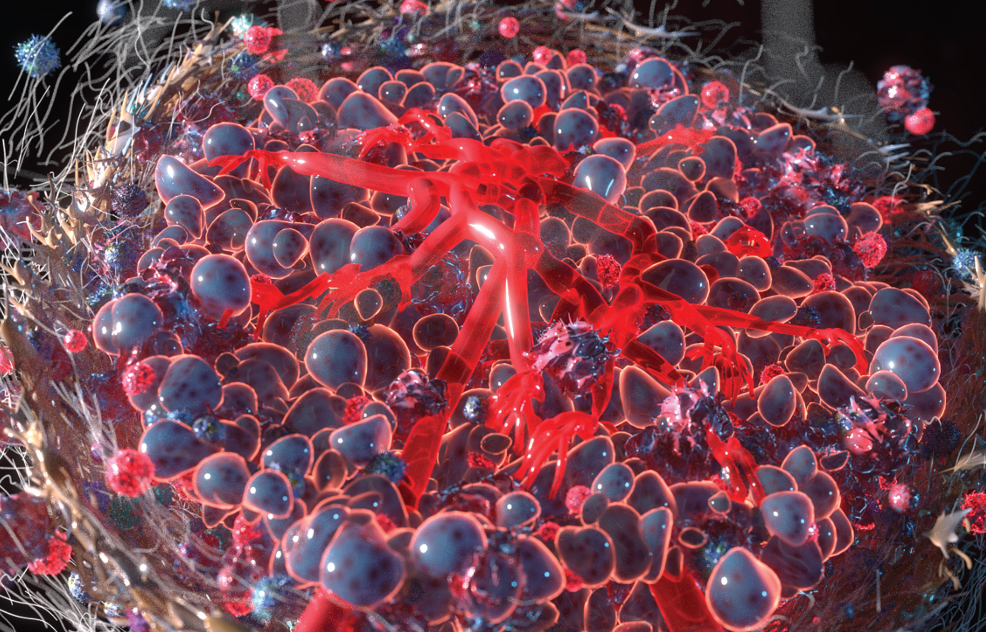AMG 193 Reveals Promising Safety Profile Across Tumor Types
AMG 193 had a promising safety profile and robust target engagement in a dose-escalating trial across tumor types.
Jordi Rodon, MD, PhD
Associate Professor
Department of Investigational Cancer Therapeutics
Division of Cancer Medicine
The University of Texas MD Anderson Cancer Center
Houston, TX

A first-in-human study of AMG 193, a type of PRMT5 inhibitor, showed that the agent has a promising safety profile and robust target engagement in a dose-escalating trial (NCT05094336) across tumor types, according to findings presented at the AACR-NCI-EORTC International Conference on Molecular Targets and Cancer Therapeutics.1 Results suggest that the agent induces synthetic lethality by targeting PRMT5 in tumors exhibiting MTAP deletion.
Forty-eight patients were enrolled in the trial and 7 doses, from 40 mg to 1600 mg, were evaluated. To be included, patients had to undergo next- generation sequencing and be identified as having tumors with MTAP or CDKN2A deletion, have measurable disease, and have an ECOG performance status of 1 or 0. Thirty-six patients had dose-limiting toxicities, 11 continued treatment and 37 discontinued. Reasons for discontinuing included progression (n = 27), patients request and adverse events (n = 4), death (n = 1), and eligibility deviation (n = 1).
The median age of patients in the trial was 62.0 years (range, 36-83), the majority were male (54.2%), and the median number of prior lines of therapy was 3.0 (range, 1-8), with 16 patients undergoing 4 or more prior lines of therapy.
Ten patients had pancreatic adenocarcinoma, 7 patients had non–small cell lung cancer, 5 had cholangiocarcinoma, 3 had mesothelioma, and 23 had other types of tumors.
Regarding safety (n = 48), 5 patients had dose-limiting toxicities and 44 patients had treatment-emergent adverse events (TEAEs) 15 of which were grade 3 or greater and 10 of which were characterized as serious. Thirty-nine patients (81.3%) experienced treatment-related AEs; 8 of them were grade 3 or greater, and 4 were characterized as serious.
Ten patients experienced dose interruptions and 10 had dose reductions but only 3 had dose discontinuations.

“The first generation of these therapies was not as selective, so we hit toxicities very early on,” lead author Jordi Rodon, MD, PhD, associate professor in the Department of Investigational Cancer Therapeutics in the Division of Cancer Medicine, at The University of Texas MD Anderson Cancer Center, Houston, said during an interview with Targeted Therapies in Oncology. “[AMG 193 represents] a new generation of therapies, it’s a different class of agents.”
Rodon explained the concept of synthetic lethality in which a single genetic event is tolerable to cell survival, but perturbation of multiple genetic or protein products results in cell death. He compared the use of a PRMT5 inhibitor in MTAP loss tumors to a BRCA1/2 mutation in breast cancer in which a cell can overcome 1 genetic mutation (BRCA1/2 mutation). Additional alterations, such as inhibiting PARP with a drug such as olaparib (Lynparza) or talazoparib (Talzenna), can lead to cell death. In this case, MTAP loss is “tolerated” by the tumor cell, but the addition of PRMT5 inhibitors would kill it.
Additional safety findings included no clinically significant signs of myelosuppression, the 1600-mg dose was intolerable to patients because of grade 3 nausea and fatigue. The dosing amendments were attributed to gastrointestinal events from excessive pill burden.
The pharmacokinetic profile suggested once-daily dosing for a dose-proportional exposure up to 1200 mg with a half-life of 7 to 12 hours. Rodon said that higher exposure was associated with greater decrease in tumor size and that robust reductions in circulating tumor DNA were observed in higher-dose cohorts and patients with clinical response.
For community oncologists, Rodon said that the presence of MTAP deficiency is quite frequent (10% to 15%) and would be identifiable in many genetic assays moving forward. It is hypothesized that a deficiency leads to greater immunotherapy resistance. “Something to keep in mind when making treatment decisions,” Rodon said. Enrollment in clinical trials is an option for patients, Rodon added, as more clinical trials are focusing on this therapeutic strategy.
Looking ahead to future clinical research, Rodon said that more patients are needed across tumor types. “There are very different tumor types that exhibit MTAP deficiency— from pancreatic to cholangiocarcinoma to melanoma—and aggressiveness varies across tumor types,” Rodon said. “One thing that would be nice to defi ne is the response rate of AMG193 in each of these diseases.”
Once adequate research on AMG 193 monotherapy has been conducted, combination therapy should also be explored, Rodon said. “Because AMG193 is relatively well-tolerated, it could be combined with different treatments and modalities,” he noted.
Overall, AMG 193 demonstrated promising monotherapy activity across 5 MTAP-deficiency tumor types, which suggests that MTAP loss could be an actionable molecular alteration.
REFERENCE
1. Rodon Ahnert, J, Yamamoto N, Doi T, et al. Initial results from fi rst-in-human study of AMG 193, an MTA-cooperative PRMT5 inhibitor, in biomarker-selected solid tumors. Presented at: AACR-NCI-EORTC International Conference on Molecular Targets and Cancer Therapeutics. October 11-15, 2023, Boston, MA.

Overcoming Barriers in Cancer Clinical Trials: A Path Forward for Better Patient Care
April 29th 2024Clinical trials play a pivotal role in developing effective therapies, yet their integration is challenged by issues such as insufficient reimbursement structures, misaligned incentives, physician burnout, and a complex regulatory environment.
Read More
Gholam Analyzes Treatment Outcomes for Advanced HCC in Child-Pugh B Population
April 28th 2024During a live Community Case Forum event in partnership with the Tennessee Oncology Practice Society, Pierre Gholam, MD, examined the current state of treatment for patients with hepatocellular carcinoma, looking in particular at what data is available for those with Child-Pugh B and C status who have poorer outcomes and have limited data from prospective clinical trials.
Read More